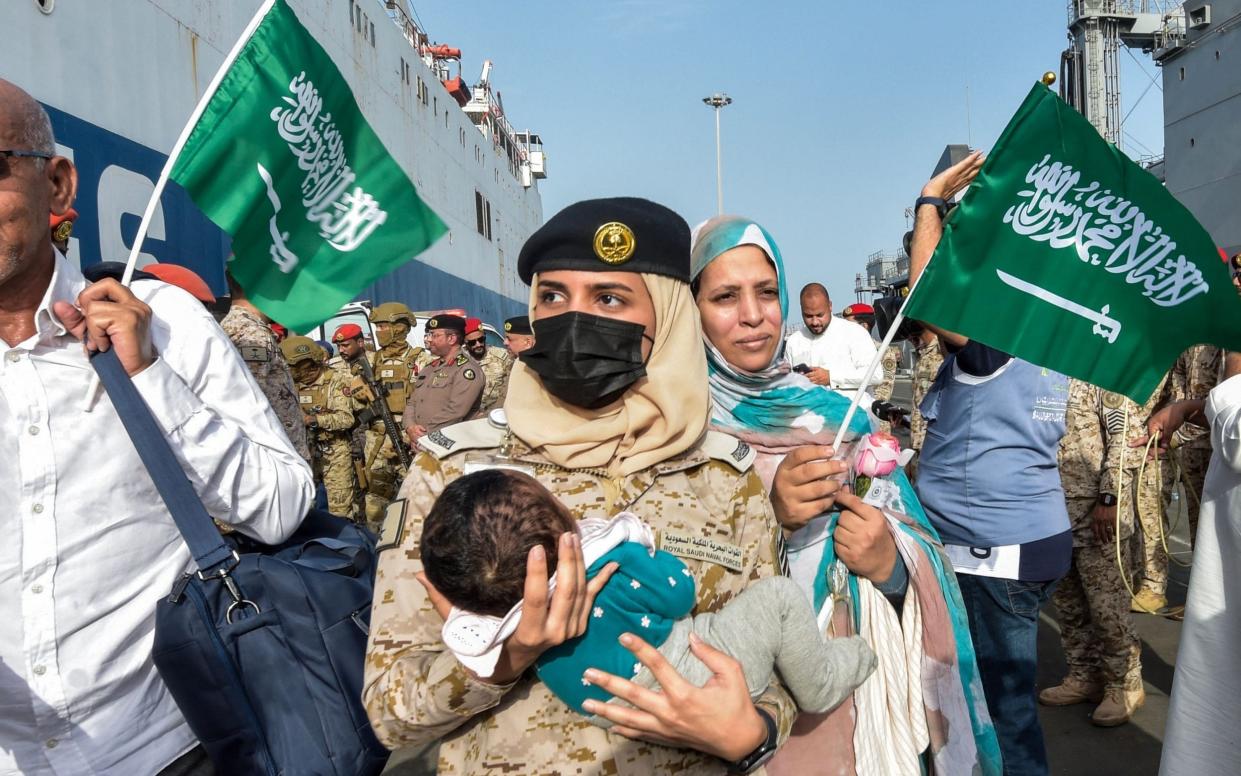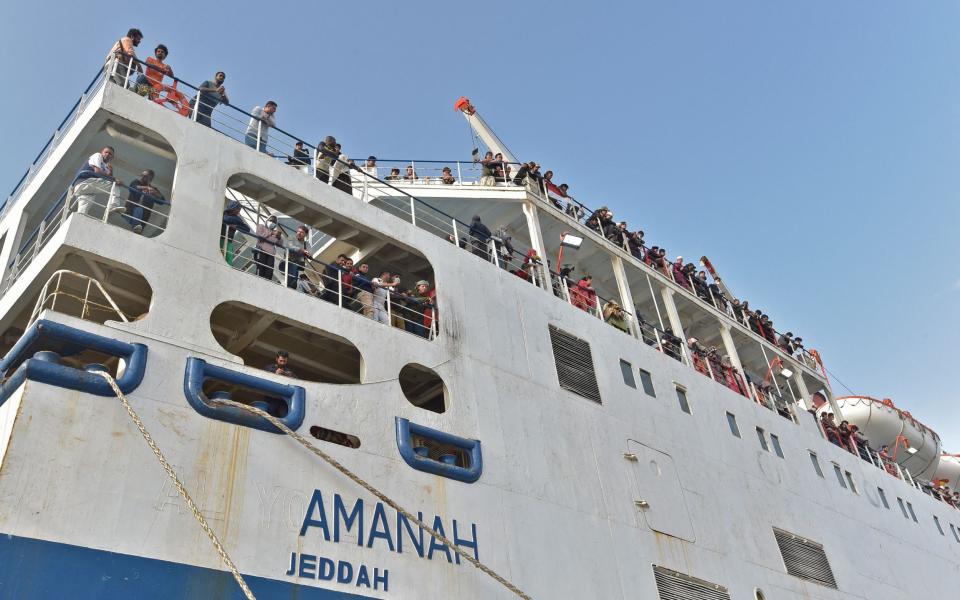How the Sudan crisis could trigger a new migration wave

The United Nations is preparing for up to 270,000 refugees to flee Sudan, where almost five million people have already been displaced.
Immigration minister Robert Jenrick predicted “very significant numbers” would flee Africa’s third-largest country, which could lead to a surge in illegal small boats crossing to Britain.
Last year, 3,191 Sudanese people made asylum claims in the UK, according to Home Office data, of whom 1,704 arrived in small boats.
Sudan hosts 1.1 million refugees and 3.7 million internally displaced people in a legacy of the almost 17-year Darfur conflict.
Before the current fighting started, the UN estimated that 16 million people - a third of Sudan’s population - needed humanitarian assistance.

Save the Children warned that about 12 per cent of the country’s 22 million children were going without enough food.
The Government believed those in peril should seek sanctuary in the first safe country they entered, Mr Jenrick said.
Asked whether legal routes for Sudanese migrants would be available, Mr Jenrick said some could enter the UK under existing family reunification schemes.
Migrants arriving in Britain branded “criminals”
Meanwhile, Suella Braverman, the Home Secretary, branded migrants arriving in Britain in small boats as “criminals”.
On a day when the Government’s Illegal Migration Bill went before the Commons, she said migrants would be returned to their home country if it was safe, or Rwanda.
“The fighting looks set to trigger further displacement, both within and outside the country,” said Olga Sarrado Mur in Geneva, the spokesman for the UN Refugee Agency (UNHCR).
The UNHCR plans to support 100,000 Sudanese refugees crossing into neighbouring Chad to escape the bitter civil war.
About 20,000 refugees have arrived in Chad since fighting began on April 15, and clean water, food and shelter are scarce, UN officials told the Telegraph.
More than 400,000 Sudanese refugees are already hosted in 13 camps and local communities in eastern Chad.
Vast majority in Chad or South Sudan
Sudanese refugees have arrived in Egypt and the Central African Republic, according to reports, but the vast majority are expected to cross into Chad or South Sudan.
In South Sudan, which seceded from Sudan in 2011 after years of fighting, supplies and resources are being prepared for 170,000 refugees.


Of that total, 45,000 are expected to come from Sudan, with the remaining 125,000 South Sudanese refugees returning home after being hosted by Sudan, which borders seven countries.
Nearly 4,000 South Sudanese have been registered crossing from Sudan, but more may have crossed the border.
There are 800,000 South Sudanese refugees in Sudan, with a quarter in the capital, Khartoum, where fighting has been fierce.
The UN Migration Agency said there are 300,000 registered migrants and tens of thousands of unregistered migrants in the country.
About 3,000 people have fled Khartoum and taken shelter in a refugee camp in the eastern province of al-Qadri, which houses 28,000 refugees - mostly Ethiopians, who fled a devastating war in 2020.
Now, many South Sudanese are expected to return home to a country in the midst of what the UNHCR called a “major humanitarian crisis”.
South Sudan has more than 2.3 million internally displaced people and almost three-quarters of its population is in need of humanitarian assistance.
“UNHCR is seriously concerned that a large, unplanned number of new returns may destabilise already struggling local communities,” the agency said.
Arrivals in Europe
Once out of Sudan, some refugees might try to make their way to Europe and ultimately to the UK, but the numbers who have arrived in the EU are comparatively small.
In January and February, 344 Sudanese entered the EU illegally, according to Frontex, the bloc’s border agency.
Of that total, 189 used the central Mediterranean route from Libya to Italy, 84 crossed the Eastern Mediterranean from Turkey to Greece, and 52 took the Western Mediterranean route from Morocco to Spain.

Frontex detected 28,130 illegal border crossings in the first two months of 2023, with most using the Central Mediterranean route.
The majority of those making the crossing came from Syria, Côte d’Ivoire, Guinea, Afghanistan and Pakistan.
Frontex reported that the number of illegal Channel crossings increased in the first two months of 2023 to more than 5,600 - 82 per cent higher than in the same period of 2022.
The Global Data Institute’s Displacement Tracking Matrix has more recent public data than Frontex, but this does not include the nationality of the migrants and refugees.
It reported a 53 per cent increase in arrivals to Europe in the week ending April 24, which brings the number of irregular arrivals by sea up to 46,200 so far this year.
While almost 3,200 Sudanese refugees made claims in the UK, there were 2,920 claims lodged in France.
According to Eurostat, the next most popular places for Sudanese migrants to claim asylum last year were Spain (640), Greece (470) and Germany (405).
In total, 5,625 asylum applications were made by Sudanese people across the EU.
Supporting “the most vulnerable”
A Government spokesman said: “The UK’s current resettlement schemes allow us to support the most vulnerable refugees direct from regions of conflict and instability.
“No one should risk their lives by coming to the UK illegally and we are focused on stopping small boats. It is our long-standing principle that those in need of protection should claim asylum and seek sanctuary in the first safe country they reach.”
He added: “For many people, it is in their best interest to stay close to the region, or in a neighbouring country where there are often similarities in culture and language, and can be supported by international organisations.
“We continue to work intensively, alongside international partners, to maintain the ceasefire and bring an end to fighting – the single most important thing we can do to prevent a humanitarian emergency in Sudan.”

